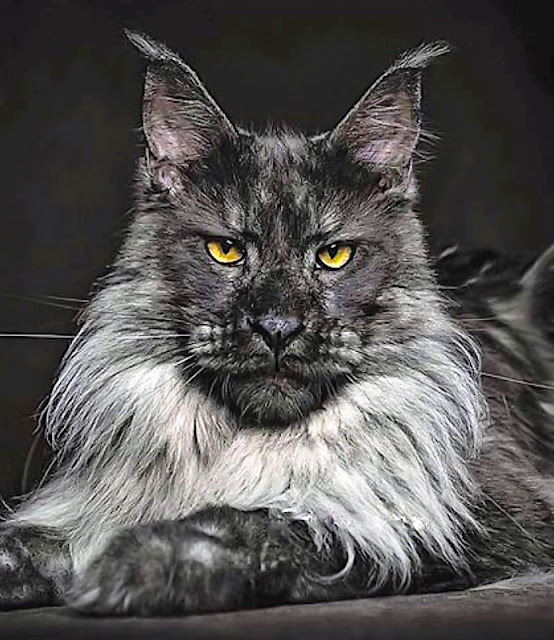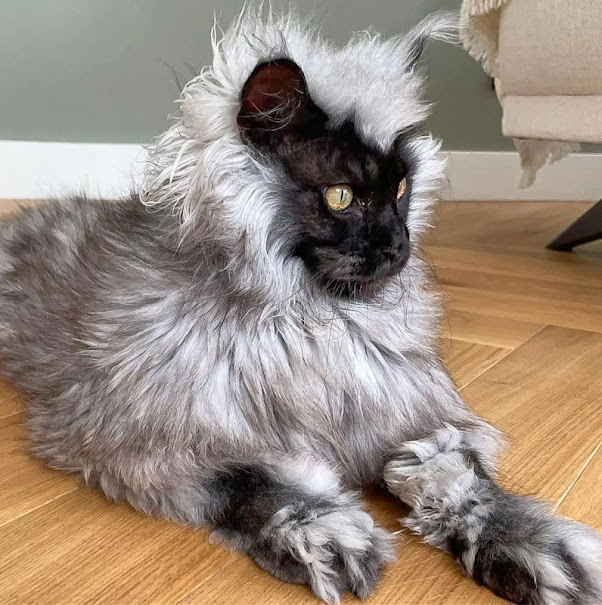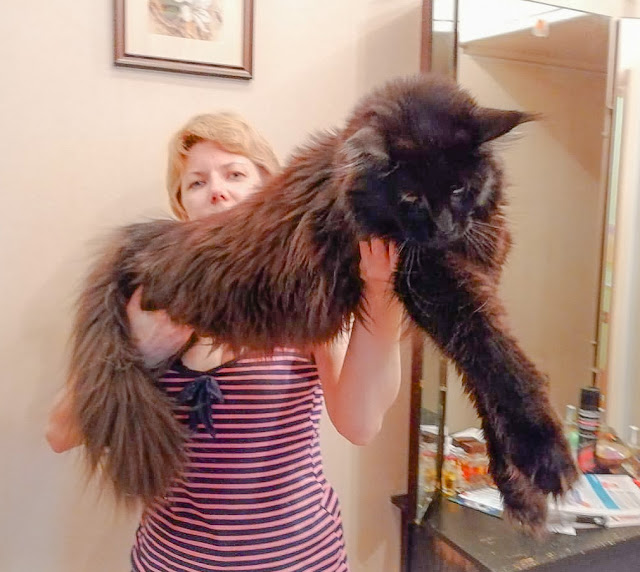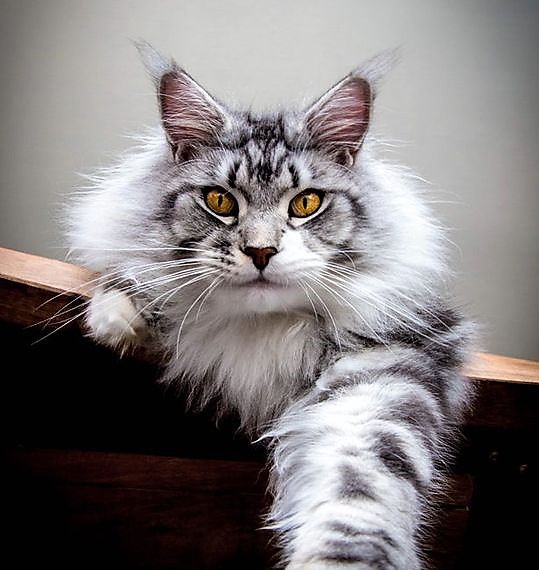Scientists created Maine Coons with diseased hearts in the interests of human health
This was a scientific abuse of the Maine Coon in using the cat as an animal 'model' of HCM.
 |
| Image: PDSA. Thank you. |
Affected cats typically did not show signs of HCM until they were at least 6 months old, and the disease progressed during adolescence and young adulthood.
Mode of inheritence
Of 22 offspring from breeding affected to unaffected cats, 12 (55%) were affected. When affected cats were bred to affected cats, 4 (45%) of the 9 were affected, 2 (22%) unaffected, and 3 (33%) stillborn.
To restate the first sentence of the above para. If a breeder mates a Maine Coon which carries the genetic mutation causing HCM with a Maine Coon that does not carry the gene, around half the kittens from the mating will have HCM.
Deliberately breeding from an affected Maine Coon
The scientists chose a Maine Coon who'd been assessed as having HCM. They mated this cat with other Maine Coons in a 'colony' to check how the disease affects other cats. The purpose was to use the information gained to better assess the mode of inheritance of HCM in humans.
Note: arguably for animal advocates this study was immoral as it entailed deliberately creating Maine Coon cats that suffered from HCM.
This is what the scientists state at the begining of their report:
"A naturally occurring animal model of familial hypertrophic cardiomyopathy (FHCM) is lacking. We identified a family of Maine coon cats with HCM and developed a colony to determine mode of inheritance, phenotypic expression, and natural history of the disease."
They wanted to use Maine Coon as an 'animal model'. In other words, the cats were a tool. It was a form of animal experimentation in a lab setting. Not good I am afraid.
Evaluation and assessment of the effects of the disease
The kittens were evaluated using echocardiography to determine whether they were affected or unaffected by HCM, and the results were used to determine the mode of inheritance.The most consistent manifestation of HCM was papillary muscle hypertrophy, which caused midcavitary obstruction and systolic anterior motion of the mitral valve.
The study also found that cats with HCM died suddenly or of heart failure, and histopathological analysis of their heart tissue revealed myocardial fiber disarray, intramural coronary arteriosclerosis, and interstitial fibrosis.










Comments
Post a Comment
Please share your Maine Coon experiences.